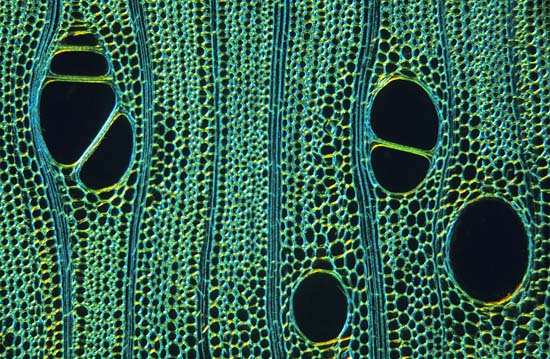
Ontology after Deleuze, Badiou, Whitehead
Politics through the Abyss
We no longer need to be reminded that politics, and more generally ontology, are no longer concerned solely with concepts. We can even now question whether they have ever been. Ontology serenely seeks the primordial origin of all conceptual and actual order; politics, slightly more modest, seeks the root cause, or motive, to social order. Political ontology is not primarily concerned with concepts, but rather with functions whose specific operation is division. So we should no longer describe a thinker as deploying ontological or political concepts, but rather dividing in an ontological or political way. Thus the consistency of a political axiom rests fundamentally on the actual effectiveness of the virtual distinctions it draws.
Both ontology and politics are in effect a careful study of the potential varieties (and strata within varieties) of groups, masses, and milieus. More precisely, ontology presents the geometry of plausible inter-relations: mapping logical trajectories between evolving surfaces. Then ‘division’ is the ontological term, because whereas masses are indiscernible depths of correlation, surfaces present explicitly calculable interfaces. Surfaces are transversal for this reason, too: they skillfully restrain their powerful depths, maintain smooth boundaries even as they transcend, divide and encompass the inner abyss with a sublime act of distinction. For even (social and scientific) classes have to do, morphologically and genealogically, with a inclusion, belonging, a divisibility of property and reality.
Ontological inferences are not simply mathematical distinctions; and political thought precisely remembers the reasons not to give into comfortable abstraction, or to yield to transcendence-claims distinguishing degrees of belonging. For if masses of any kind can be said have an interest in this sense, then the idea of justice even as disinterestedness should invite us inquire whether and how they are cared for; thus we can say that materialism (and even, in an ironic sense, its modern subversion) contains an important kernel of ethical truth, namely, that counting is not comprehending. For example, let us compare a cursory scientific experiment which merely takes account of a sequence of events, to a mature scientific project which investigates interconnections between and within a variety of processes.
Similarly, framing social justice as an ontological distinction already begs the question of interconnection: for masses always have interests, even when ignored by those who ‘count.’ Counting can be seen as ‘disinterested’ only through a sublimation of inherited violence, a violence which imitates thought in its desire to become invisible, to become ingrained even into the very geometry of the universe, into the deepest substructures of information.
Beyond the Count, Outside the Distinction
The territory of the count is not absolute: there are wanderers about the edges, brave adventurers tracing paths into the void. Of course many break down, though some break through. Those who escape the territory of the count –mutants on the edge of the void – are those in whom real thinking can occur.
Three thinkers illustrated how this concept of marginal or transversal thinking plays out both metaphysically and politically. Though and politics function in divergent ways throughout the thought of Alain Badiou, Gilles Deleuze and Alfred-North Whitehead, but some major continuities can be clearly indicated. For Badiou, justice is pure disinteres, and the question is about the distance from the State-apparatus, the counting-machine. For Deleuze, the question of political thought is about the possibility of a process of healing desire; we need a radical kind of institutional analysis which is forward-thinking and energetic, both critical and clinical, not to mention capable of the heavy theoretical and practical work of rearranging the blockage, misdirection and appropriation of desire by institutions into a more healthy ecosystem -- mental, physical and social -- in order to help create better and more efficient social machines. For Whitehead, the question of social change is about evolution and flux [more?].
What ties them together is not faith in the future, but a faith in a primordial vision of society which is possible from our modern perspective. We could not have gotten this far without having a past, and while it is important to move beyond the past, history is ‘required reading’ for inaugurating a process of the gradual adaption of social systems towards new arrangements. Becomings should not be taken lightly.
The question is not: how are we to judge ontologies? For they already contain eschatologies, and dictate potential utopias. Ontology is like mathematics in that it is wholly symbolic, the dream of an ‘unbroken’ text, a self-contained truth lodged within its own marking. Any particular ontology already has its entire future sewn within itself – and even its prehistory. It is in the form of the intuition that prehistory shapes the present that we find a curious and golden thread running through Marx, Nietzsche and Freud. Their modern counterparts – Deleuze, Badiou and Whitehead – have taken a similar inspiration towards a new kind of ontology.
The Power of Fidelity
To leap right in, let’s consider what occurs when we are faithful to an event or process. Does the process change us? Do we affect the event the way the event affects us? Does our fidelity structure the aesthetics, even the politics, of the form of representation? As faithful observers, we are mirrors from the world, but we are not in the picture. Faith is a becoming-void, turning something into nothing. Topologically, such a faithful subject could be considered the very origin of the situation, the distinguishing void-point around which the entire symbolic coordination is achieved. What is most apparent about this kind of conceptual apparatus is the possibility of a counter-coordination, that is, the inauguration of a new kind of public space, which is able to dispense with the hypocritical historical divisions between private ‘self’ and public ‘person.’ This division is the radical core of ontology, its danger and saving power – it is the dream of an ontology.
The power of fidelity as a subjective split between within and without is the most powerful of social drives, even intervening in the most mundane of political processes. Ontology, which itself is division, divides its own operation by faith: what is theory, and what practice to ontology? For it is certainly not merely counting! If the object of ontology is Being, then practically our consideration is not political (at least primarily) -- but ethical and aesthetic. We desire to make being good, to make it beautiful... and only secondarily to make it just, to make it fair.
For the moment accepting this hypothesis, let’s suppose the entire question of the political is merely the logic of interest. Then we would only be able to ask the genealogical question: how does the apparent order of political categories arise in the first place? In other words, if disinterestedness remains our criteria for justice, then the logic of politics collapses into a pseudo-logic of public and private spaces. Concretely, political machines introduce a divisional logic of splitting. Theoretically, this would imply that if politics is the logic of interest, then thinking politically is only about fidelity, or loyalty – that is, being able to clearly distinguish inside from outside. Again materially, this amounts to a surgical incision which is pedagogical, a suffering which functionalizes our body, making of it an object-lesson.
Transversality is something we do
A distinction serves a new axis of freedom for it allows access to new spaces of the machine, implies new trajectories of social movement. But insofar as distinction is a compressed sort of division, distinction also wounds us. Ironically, division (almost!) fulfills our desire to be whole. Let’s say that “social transversality” refers to that involution of social desire which transfigures reality by scrambling and reordering all of the infinite segments of experience – maximizing their potential. To speak of the pure transversal is dishonest, because it already speaks-- it is the flowing of speech and even of comprehension itself; for the pure transversal would be the very source of order. But we are poets when we describe it figuratively; after all, the transversal is not a point, but the flowing and endless remapping and self-organizing of singularities. Just as with distinction, the tranvsversal ought to be thought of as more a function than a concept. Transversality is not something you think; it’s something we do!
So what underlies all politics questions are the social machines which produce unconscious and even preconscious interests. Our desires, political or otherwise, seem to express themselves as though formed and even enunciated by complex machine of coordinating energy, force and power. Whitehead concludes The Adventure of Ideas:
“At the heart of the nature of things, there are always the dream of youth and the harvest of tragedy. The Adventure of the Universe starts with the dream and reaps tragic Beauty. This is the secret of the union of Zest with Peace:- That the suffering attains its end in a Harmony of Harmonies. The immediate experience of this Final Fact, with its union of Youth and Tragedy, is the sense of Peace. In this way the World receives its persuasion towards such perfections as are possible for its diverse individual occasions.”












